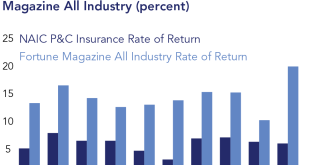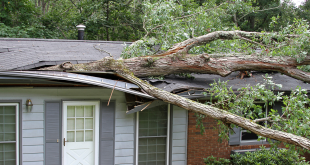What is Home Insurance?
Home insurance is what protects the actual building you live in. The walls, the roof, the floors – the whole shebang! If a fire decided to have a party at your place, or a massive storm ripped through (touch wood it never does!), this insurance would help cover the costs of rebuilding or repairing the damage. It’s like having a bodyguard for your house! Ever wondered if your place is really worth all the stress? Well, home insurance is peace of mind, plain and simple.
What is Contents Insurance?
Now, contents insurance is all about your stuff. You know, your furniture, clothes, electronics, that priceless vase your grandma gave you (eep!). If your belongings get stolen, damaged by fire, or suffer from water damage, this is what kicks in. Imagine coming home to find your place ransacked – not a fun thought, is it? Contents insurance helps you replace those things without completely emptying your bank account. I once had a friend whose apartment flooded, and let me tell you, contents insurance was her absolute savior.
Combined Home and Contents Insurance
Most insurers offer a combo deal – home and contents together. It’s usually cheaper than buying them separately. Think of it as a value meal. Less hassle, less cost. Makes sense, right?
What Does Home and Contents Insurance Cover?
Common Covered Events
So, what exactly are you covered for? Generally, you’re looking at things like:
- Fire: Obvious one, but crucial.
- Theft and Burglary: Keeping those pesky burglars from ruining your day.
- Storms and Flooding: Australia, right? Gotta be prepared for anything Mother Nature throws our way. Though, flood cover can be tricky, so read the fine print.
- Vandalism and Malicious Damage: Because sadly, some people just can’t behave.
- Impact Damage: A runaway car ending up in your living room? Unlikely, but it could happen!
- Water Damage: Burst pipes, leaky roofs – the silent destroyers.
Understanding Exclusions
Okay, this is important! Policies don’t cover everything. Usually, you’ll find exclusions like:
- Wear and tear: Your insurance isn’t going to pay for your aging sofa falling apart.
- Damage caused by pests or vermin: Sorry, termite damage is on you.
- Unoccupied properties for extended periods: Leaving your house empty for months? Might affect your cover.
- Certain types of water damage: Gradual leaks that you ignored for ages? Probably not covered.
- Actions of tenants: If you’re a landlord, you need specific landlord insurance for that.
Always, always read the fine print! Don’t just assume you’re covered for everything under the sun, or you might be in for a rude awakening.
Factors Affecting Premiums
Building Sum Insured
This is the amount it would cost to rebuild your house from scratch. It seriously impacts your premium. Don’t just guess! Use an online calculator or get a professional valuation. Underinsuring is a classic mistake, and you really don’t want to make it.
Contents Sum Insured
Same deal, but for your belongings. Go room by room and think about how much it would cost to replace everything. It’s tedious, I know, but worth it in the long run. I always underestimate this one – until I actually start thinking about replacing my gadgets and clothes!
Location and Risk Factors
Where you live makes a big difference. Flood-prone areas, bushfire zones, high-crime areas – all mean higher premiums. Makes sense, doesn’t it?
Excess
The excess is what you pay out-of-pocket when you make a claim. Higher excess usually means lower premiums, but make sure you can actually afford that excess if something happens!
Choosing the Right Policy
Comparing Quotes
Shop around! Don’t just go with the first quote you see. Compare several insurers to find the best coverage for your needs and budget.
Reading the Product Disclosure Statement (PDS)
Yep, more fine print. But seriously, read it. It tells you everything you need to know about what’s covered, what’s not, and any conditions that apply.
Understanding Replacement vs. Market Value
“New for old” replacement policies are generally better because they replace your damaged items with new ones. Market value policies only pay out the depreciated value, which might not be enough to buy a replacement. Think about that TV you bought five years ago – it’s not worth what you paid for it then!
Considering Optional Extras
Do you need extra cover for accidental damage? Legal liability? Valuable items like jewelry or artwork? Consider your specific needs and whether these extras are worth the cost.
Making a Claim
Reporting the Incident
Report the incident to your insurer ASAP. Don’t delay!
Providing Evidence
Take photos, videos, get police reports if necessary, and gather any receipts or proof of ownership. The more evidence you have, the smoother the claims process will be.
Cooperating with the Insurer
Answer their questions honestly and provide any information they request. Being cooperative will help speed things up.
Tips for Saving on Home and Contents Insurance
Increase Your Excess
If you can afford it, a higher excess can lower your premium.
Install Security Systems
Alarms, security cameras – they can all help reduce your risk and potentially lower your insurance costs. Plus, they make you feel safer, which is a bonus!
Bundle Policies
Bundling your home and contents insurance with other policies (like car insurance) can often get you a discount. Ask your insurer!
Review Your Policy Annually
Make sure your coverage is still adequate and compare prices with other insurers. Your needs might change over time, so it’s worth checking in every year.
So, there you have it! A quick rundown on how home and contents insurance works in Australia. It might seem a bit daunting, but trust me, understanding the basics can save you a lot of headaches later on. Take some time to research your options, compare quotes, and choose a policy that fits your needs and budget. And hey, maybe share your own insurance horror stories (or success stories!) in the comments below. We can all learn from each other!
 seeme
seeme




